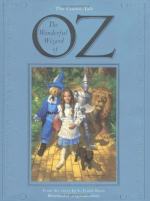|
This section contains 10,026 words (approx. 34 pages at 300 words per page) |

|
SOURCE: Culver, Stuart. “What Manikins Want: The Wonderful Wizard of Oz and The Art of Decorating Dry Goods Windows.” Representations, no. 21 (winter 1988): 97-116.
In the following essay, Culver examines Baum's depiction of the emerging consumerist culture of his time in both The Wonderful Wizard of Oz and The Art of Decorating Dry Goods Windows, which Baum wrote simultaneously.
The lower animals keep all their limbs at home in their bodies, but many of man's are loose, and lie about detached, now here and now there, in various parts of the world.
—Samuel Butler, Erewhon
In the closing moments of MGM's The Wonderful Wizard of Oz (1939), the Scarecrow, Tin Woodman, and Cowardly Lion enter the Wizard's throne room to receive the material objects that symbolize the spiritual qualities they have so long pursued. By now, of course, Dorothy's three companions know the Wizard is a “humbug,” but they are...
|
This section contains 10,026 words (approx. 34 pages at 300 words per page) |

|


